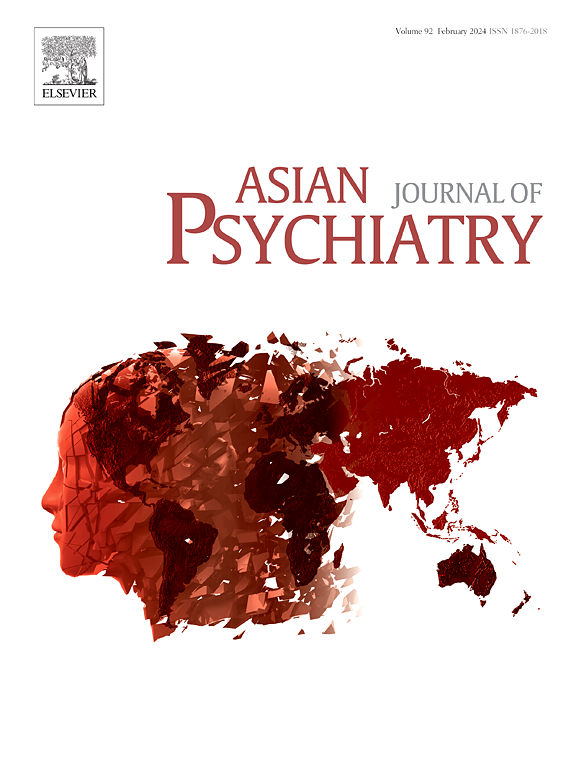Inpatient suicide trends and prevention: Insights from a South Korean nationwide study
IF 3.8
4区 医学
Q1 PSYCHIATRY
引用次数: 0
Abstract
Objective
Inpatient suicide is a significant problem, accounting for the third-highest ratio(17.8 %) of suicides in South Korea in 2017. We aimed to investigate the characteristics of inpatient suicides using national data, evaluate risk factors, and provide recommendations for suicide prevention.
Methods
This nationwide case-control study utilized national data on all inpatient suicides from police investigations between 2013 and 2017. A total of 4998 individuals were included, comprising 833 inpatient suicides and 4165 controls. Inpatient suicide risk factors were assessed through cross-tabulations and logistic regression analyses.
Results
Among eight hundred thirty-three individuals died by suicide in hospitals; most were male (74.9 %), older than 60 years (61.3 %), married (43.0 %), and unemployed (85.1 %). The primary method of inpatient suicide were jumping from a height (49 %), followed by hanging (39.7 %). Major depressive disorder was the most prevalent psychiatric diagnosis among inpatient suicides. The risk of inpatient suicide was significantly higher in patients with schizophrenia, dementia, and alcohol use disorder.
Conclusions
Effective management of hospital facilities and environments is essential to prevent inpatient suicides. Nursing hospitals treating patients with dementia require more rigorous psychiatric evaluations and facility safety standards. We recommend implementing crisis interventions and comprehensive psychiatric assessments to prevent inpatient suicide.
求助全文
约1分钟内获得全文
求助全文
来源期刊

Asian journal of psychiatry
Medicine-Psychiatry and Mental Health
CiteScore
12.70
自引率
5.30%
发文量
297
审稿时长
35 days
期刊介绍:
The Asian Journal of Psychiatry serves as a comprehensive resource for psychiatrists, mental health clinicians, neurologists, physicians, mental health students, and policymakers. Its goal is to facilitate the exchange of research findings and clinical practices between Asia and the global community. The journal focuses on psychiatric research relevant to Asia, covering preclinical, clinical, service system, and policy development topics. It also highlights the socio-cultural diversity of the region in relation to mental health.
 求助内容:
求助内容: 应助结果提醒方式:
应助结果提醒方式:


